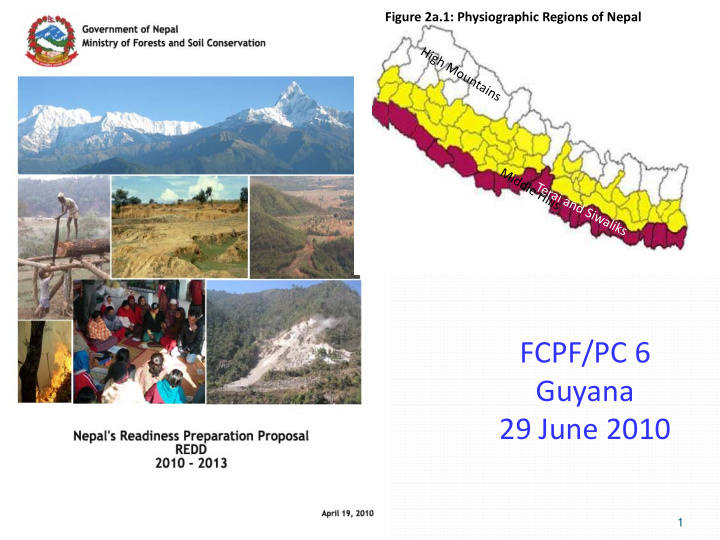



Figure 2a.1: Physiographic Regions of Nepal FCPF/PC 6 Guyana 29 June 2010 7/7/2010 1
Vision By 2013 and beyond, our greenhouse gas emissions resulting from deforestation and forest degradation, will be significantly reduced by forest conservation and enhancement by addressing the livelihoods concerns of poor . 7/7/2010 2
Principle Mainstreaming National REDD Plus Strategy with Nepal’s overall development strategy. Multi-stakeholder involvement Co-benefits for Nepal’s poverty reduction strategy Adaptation to climate change Capture and fully value the wide range of ecosystem benefits from forests. Seeking and coordinating international funding 7/7/2010 3
National Readiness Management institutional structure 7/7/2010 4
Consultation and Outreach 7/7/2010 5
7/7/2010 6
7/7/2010 7
Figure 2a.1: Physiographic Regions of Nepal 7/7/2010 8
Land Use Change Fig 1: Land Use Type and Coverage in Percentage Nepal has broadly (National Forest Inventory 1999) three ecological region- Terai, Hills 18 and Mountain. 21 7 14 Data on DD are scanty and contradicting. 40 Agriculture land Community based Public Land resource management Forests and shrub approaches are land Grass land successful Rocks and snow cover 7/7/2010 9
Prioritized Drivers of DD 1. High dependency on forests and forest products (timber, firewood, and other NTFPs) 2. Illegal harvest of forest products 3. Unsustainable harvesting practices 4. Forest fire 5. Encroachment 6. Overgrazing 7. Infrastructure development 8. Resettlement 9.Expansion of invasive species 7/7/2010 10
Further Studies Requirements Detailed Assessment of Forest Policy and Law Enforcement in Nepal Marketing Study of Timber and other Forest Products A Detailed Assessment for Land Use, Tenure and Conflicts Assessment of contributions of forestry sector in the national GDPs of Nepal. Development of a Guideline for Invasive Species Management 7/7/2010 11
Strategic Options Underlying causes of DD and strategic options were developed. Strategic Options revised on 28 03 010.doc Further analysis steps include: - Conduct analytical studies - Consultation for options prioritizations - (Social, Economic, Environmental, Governance and Technical) - Economic and financial assessment - Preparation and consolidation of the REDD Strategy - Monitoring and Evaluation 7/7/2010 12
Implementation Approach Establish link between carbon ownership and land tenure Utilize existing institutions Build on successful benefit sharing Utilize multi-stakeholders mechanism Fund Transaction - Trust Fund Model. Clearing house Learning from ongoing pilots Higher benefits to locals 7/7/2010 13
Social and Environmental Impacts ToR with six major activities Stakeholder Analysis Initial social and environmental situation Analysis of possible impacts of ‘no REDD process’ Analysis of the possible impacts of "REDD Process” Analysis of recommended alternative impacts Verification of compliance with WB policies 7/7/2010 14
Historic data LRMP Which line represents the biom ass historic trend? FRA 1 9 6 0 1 9 7 0 1 9 8 0 1 9 9 0 2 0 0 0 2 0 1 0 2 0 2 0 2 0 3 0
Reference scenario Three steps Creation of biomass surface map Creation of current biomass surface Development of multi-year historic reference scenario Country wide spatial regression model imbedded in a CGE (Computable General Equilibrium) model 7/7/2010 16
Future projections biom ass 1 9 6 0 1 9 7 0 1 9 8 0 1 9 9 0 2 0 0 0 2 0 1 0 2 0 2 0 2 0 3 0
Monitoring system Will be build on planned FRA activities Combination of RS and ground data collection 1,700 permanent sample plots established by FRA Linked to community monitoring system 7/7/2010 18
Proposed monitoring, data management and reporting system Wall-to-Wall Benchmark database monitoring RS data National Forest Information Validation FRA 2012 Management Field based data Imageries System (NAFIMS) from sample Plots Boundary Regimes Central Forest National / GeoDatabase HDI. Other Sub-national Poverty Map (CFGD) Administrative, Data National Statistics Watershed etc.. Sources Food Security, Forest Regime Disaster etc.. Access and share data Information Community Forest through Private forest Governance web-based Portal Leasehold forest GoN Managed forest Protected area Option # 1 Information Monitor Collaborative forest Religious forest etc.. Option # 2 Management/Actor International Reported DFO/PAs Donors/ INGO Enablers tabular data Stakeholders IPs and local VDC/ Actors DDC DFCC Civil Society VFC C communities 7/7/2010 19
5. Budget and Schedule Total costs 7,654.5 Government 335.0 FCPF 3,595.4 DFID/ S DC through funds already committed for Nepal National Forest Programme 1,447.5 Government of Finland through funds already committed to FRA proj ect 780.0 JICA (TBC) 360.0 US AID (TBC) 1,136.6
5. Budget and Schedule Budget categories % Consultation, outreach 23.3 Capacity building 16.3 S tudies 6.4 Developing reference scenario 17.2 Design monitoring system 24.0 M&E framework 3.1
Addressing TAP Comments Received on 11 June, 2010 Clarifications- minimum work requirement • R-PP_Nepal revised June 25, 2010(1).doc • Require additional work/discussions • Difficulties in addressing •
1.1 Clarification/Suggestions Relation between REDD Forum and REDD-Cell, Role of National Planning Commission, Indigenous population, Consultations across the different regions ( in 1b),
1.1 Clarification/suggestions Methodologies to Set up 1,700 sample plots, Distance users, Necessity of five proposals under 2a, Closer ties to other proposed and ongoing project (e.g. NORAD), Models used by ICIMOD and WWF,
Addressed/incorporated In the Absence of Democratically Elected Bodies … consider for Pilot Implementation Mechanisms, How message could be extended to 16,000 CFUGs, DD Study in Churia and High Mountain ToR has been Developed to Commission Study on Coordination among various stakeholder M&E framework developed (component 6)
Addressed/incorporated Seek More Historical data…….ToR has been Developed, What could be Done in the Terai Arc in Curbing Cross-border Illegal Activities, Use of web-based decision support tools for Strategy Options, Incorporated Text under 2d. GIS boundary for Different Legal Forest Categories
Require Further Work- few weeks Cross sectoral policy review- Agri., Energy etc Proposal for monitoring the drivers of DD Monitoring proposal for private trees/farm trees Cost of setting up Central Clearing House Costs of the country-wide spatial regression model… Boundary separation between different legal management regimes
Final statement Sufficient basis to move forward 7/7/2010 28
Thank You 7/7/2010 29
Recommend
More recommend